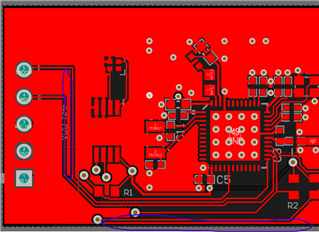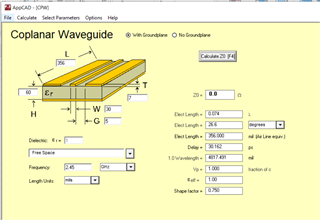I used the nrf52832-QFAA Reference Layout as the base design for the PCB.
The changes I made were:
1.) Added the DS1339 RTC Pin P0.22 will be configured SCL and pin P0.0.23 will be configured to SDA.
2.) Adding a 3.3V CR2032 battery to supply power to the nrf52832 as well as the DS1339 RTC
3.) Added a 5 pin header with connections for SWDIO, SWDCLK, VDD, GND, and Pin P0.14.
4.) Added a circuit to allow for attachment of a switch across pins 1 and 2 which will pull pin P0.14 to GND to use in software as a button press active low.
The overall goals are:
1.) Power the entire circuit and RTC with the CR2032 battery
2.) Use an external switch attached across header pins 1 and 2 to pull pin P0.14 to GND
3.) Get the time from the DS1339 RTC upon button press over TWI using pins P0.22 and P0.23 as SCL and SDA
4.) Send the time over BLE
5.) Be able to program using header pins 2,3, 4 and 5.
Notes:
I am planning to just run the DS1339 RTC off of VCC at all times with no Vbackup as the level of power consumption isn't important at this stage.
I made a mistake and used the wrong reference design without the DCDC regulation, and had to re-add it manually so please check this as well.
Questions:
I am most unsure about the matching network for the chip antenna. I developed it with help from a PCB review (https://devzone.nordicsemi.com/f/nordic-q-a/77219/pcb-review-nrf52832). C15 and C16 will not be fitted until tuning takes place. This is the first iteration of the board so tuning can be done later, but I want to verify that my matching network and antenna will work. Here are the links for the DS1339 and antenna
2450AT42E010BE Antenna: www.johansontechnology.com/.../2450AT42E010B.pdf
DS1339 RTC: https://datasheets.maximintegrated.com/en/ds/DS1339-DS1339U.pdf
Please also verify that the DS1339 RTC circuit and header circuit/external switch will function as planned if possible as well.
Thanks!
*Edit: Changed a few things in board layout since first posting, attached files are updated.
nrf52832_qfax_dcdcThirdRevisionRoutedFinal.PcbDoc7041.nrf52832_qfaaThirdRevision1.SchDoc




